Varicose veins are pathologies of the veins that manifest in their deformity and disruption of blood flow. Considering the appearance of spider veins, pain and heaviness in the legs, it is advisable to start treatment for varicose veins immediately, especially since the initial manifestations of the disease can be treated with minimally invasive or generally folk methods.
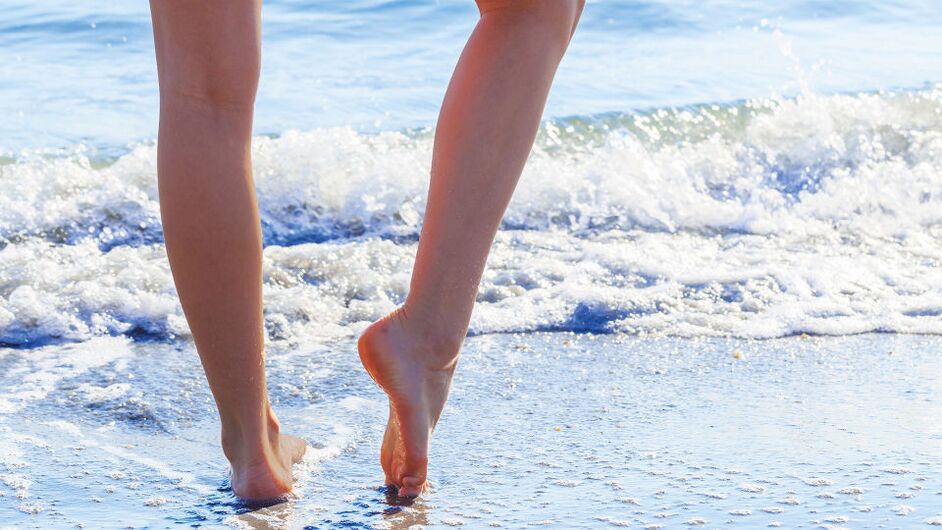
The main signs of varicose veins in the legs
The well-known "cobweb" on the legs is nothing more than the initial stage of varicose veins. In addition, the main signs of varicose veins are:
- persistent swelling of the legs in the thigh or lower leg;
- difficulty in the legs;
- skin discoloration: appearance of red spots, darkening;
- the veins change in shape and size;
- thickening of the skin on the leg;
- severe pain in the calves aggravated by walking, warmth and a burning sensation in the legs;
- pain in the veins when pressured;
- development of trophic ulcers;
- leg cramps at night.
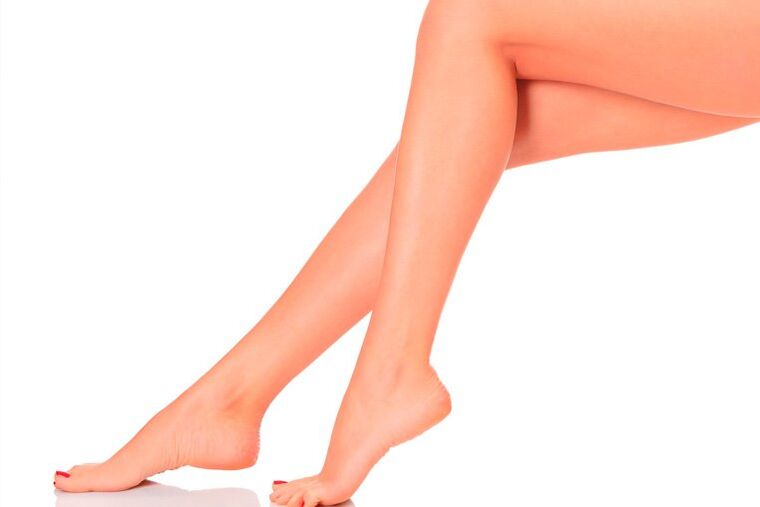
With varicose veins in the legs, therapy should be started as soon as possible.
In such places, the speed of blood flow slows down, which contributes to the development of thrombosis.
With this disease, the venous blood vessels lose their elasticity, dilating and twisting in some places to form nodes.
How to heal varicose veins in the legs?
Modern medicine offers many ways to treat the disease. The physician should decide on the treatment regimen, taking into account the existing symptoms, comorbidities, and characteristics of the patient's body. As a result, such modern methods can be involved:
- Conservative treatment is the use of certain medications.
- Minimally invasive techniques. Whenever possible, doctors try to use these to treat varicose veins in the legs.
- Radical therapy. Venectomy and phlebectasia for varicose veins.
In the mild stage of varicose veins in the legs, folk remedies can be used to eliminate varicose veins in many cases with the approval of a doctor.
Wearing a compression garment promotes the early healing of varicose veins and also supports the veins in the postoperative period. The effectiveness of compression garments is due to the effect of tissue compression, which leads to compression and varicose veins. There are models of products used to treat varicose veins in men and pregnant women.
Modern treatment methods
Medication: creams, ointments and gels
Varicose veins cause damage to the blood vessels, which leads to stagnation of the blood. Therefore, the following groups of drugs will be effective in the first stage of the disease:
- Non-steroidal tablets or gels to prevent inflammation. It is used to treat thrombosis and thrombophlebitis. Varicose veins should only be treated with these medicines under medical supervision.
- Based on hormones that are antihistamines, they have an anti-inflammatory effect on varicose veins. They also reduce tissue swelling.
- Blood-thinning drugs that prevent the stagnation of blood in the veins and the formation of blood clots dilute the blood and improve its circulation.
These medications are actively used in the home therapy of varicose veins, but should be used strictly as directed by your doctor. Ointments and gels are usually applied directly to the vascular system twice a day.
Minimally invasive procedures
Minimally invasive methods of treating varicose veins do not require surgery, hospitalization, and long-term subsequent rehabilitation. Non-surgical intervention is performed in a workshop under local anesthesia. These methods of treating varicose veins in the legs are less traumatic.
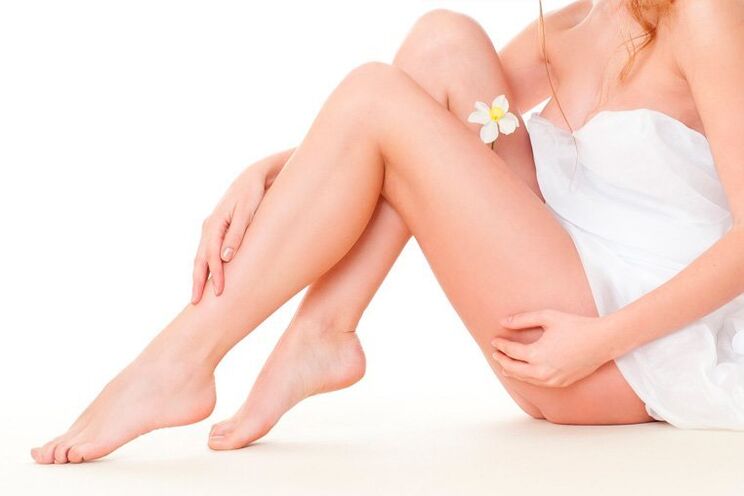
The patient can go home on the same day.
In 95% of cases of varicose veins, doctors use non-surgical procedures, and only 5% of patients require phlebectomy.
Minimally invasive procedures include:
- radiofrequency ablation;
- sclerotherapy;
- laser ablation;
- microflebectomy.
Sclerotherapy
The method of sclerotherapy is to inject a sclerosant into a deformed vein. It clogs the damaged area of the vein and the blood moves on the restored bed. Over time, the isolated section of the vein dissolves on its own.
Sclerotherapy is performed under continuous ultrasound monitoring. Modern technologies have further developed the method of sclerotherapy. Today, more and more people are using a more effective method to treat varicose veins - foam sclerotherapy. This is done if the diameter of the veins does not exceed 10 mm; such an intervention causes virtually no complications in the postoperative period.
After sclerotherapy, the patient is advised to wear compression clothing for a month to consolidate the positive effect.
Radiofrequency ablation
The radiofrequency ablation method is one of the least traumatic, yet it effectively eliminates varicose veins in the legs. The procedure is possible with any diameter of the veins. Ablation is performed under local anesthesia with constant ultrasound control.
With a small puncture in a vein, a radiofrequency catheter is inserted into the tissue around the vein at the desired location. An anesthetic is then injected, which creates a "bed of water" around the damaged vein that protects the surrounding tissues from the effects of radio waves. Long-term rehabilitation is not required after radiofrequency therapy, the patient can live an active life for 2 weeks after the intervention. Despite the cost, this method has the best reviews on the forums.
Radiofrequency ablation is contraindicated in thrombophlebitis and trophic skin lesions.
Laser ablation
Laser ablation is performed on an outpatient basis for 30 minutes to 2 hours under local anesthesia. Upon completion, the patient can go home immediately, regardless of the clinic. The method consists of burning the walls of the blood vessels with a laser using a special light guide. As a result, the affected area of the vein becomes occluded.
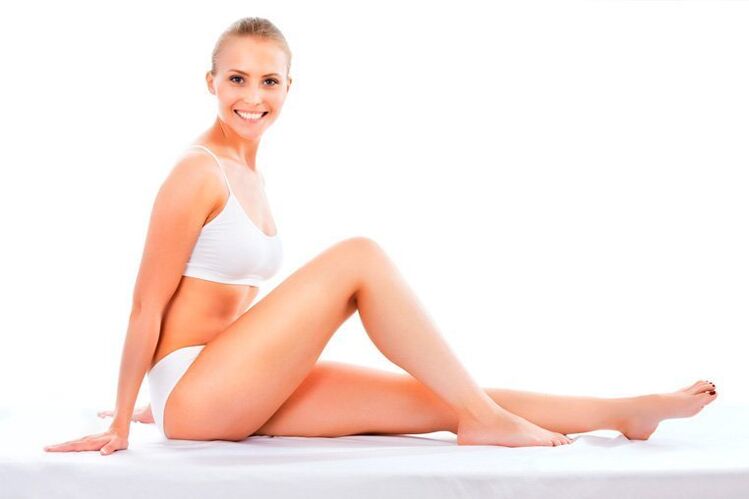
Over time, the laser-treated area dissolves.
Several types of optical fibers are used for laser ablation:
- end - for veins up to 1 centimeter in diameter;
- radial - for veins of any diameter, 360 degree coverage.
After the laser therapy procedure, it is recommended that the patient wear compression stockings for prophylactic purposes. The type of bedding and the duration of its use are prescribed by a phlebologist, the price of such aids has recently become lower.
Microflebectomy
During the micleblebectomy procedure, the surgeon removes the affected area of the vein using special hooks. These hooks are inserted into the vein with a microsection of up to 1 mm. The procedure is performed under local anesthesia.
The rehabilitation period after treatment is 3-5 days, after which the patient can return to work. During the procedure, bruises occur at the site of exposure, which dissolve on their own after 3-4 weeks. It is recommended to wear a compression dress for the first 2 weeks after microflebectomy.
The benefits of microflebectomy include the ability to apply the technique to veins of any diameter and completely remove the affected area of the vein.
Phlebectomy
In case the varicose veins in the legs are quite neglected and the non-surgical treatment regimen does not give a positive result, the patient is prescribed surgery to remove the damaged veins - phlebectomy. In advanced cases, only surgery can help cure varicose veins.
Phlebectomy is performed in a hospital under spinal or general anesthesia for up to 2 hours. After surgery, the patient is monitored at the treatment center for 1-2 days.
Indications for surgery:
- severe violation of blood outflow;
- extensive varicose veins;
- severe complications of varicose veins - thrombophlebitis, trophic ulcers.
The risk of complications during surgery is minimal, but there are contraindications to phlebectomy:
- inflammatory processes on the skin;
- internal deep vein thrombosis;
- diseases of the cardiovascular system;
- hypertension;
- infectious diseases;
- pregnancy.
For phlebectomy, a special probe is inserted into a vein through a small incision in the skin. The enlarged section of the vein is removed mechanically and the incision is sutured.
In the postoperative period, the patient is prescribed venotonics and devices to reduce blood viscosity, it is recommended to wear compression underwear for 2 months, perform exercises from a special gymnastic complex and walk in the fresh air.
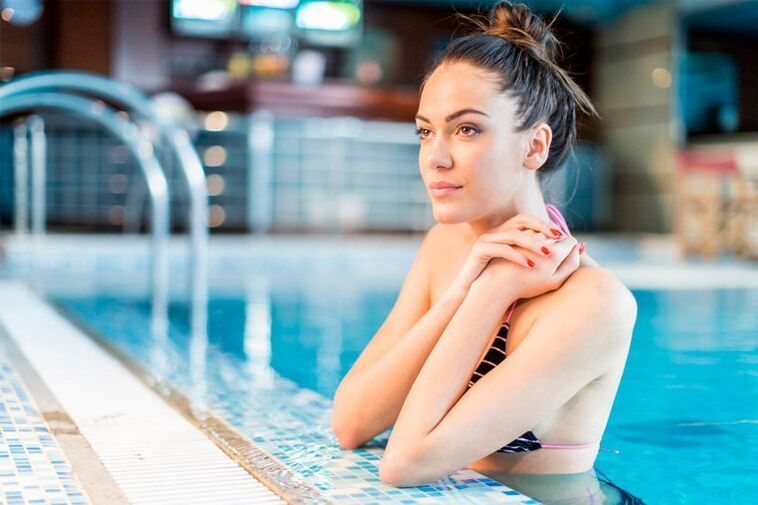
Cycling and swimming are also useful.
Varicose veins treatment on the feet with folk remedies at home
Treating varicose veins in the legs with folk remedies can be effective in the early stages of the disease if you approach the problem comprehensively, in consultation with your doctor. A number of measures need to be taken to eradicate the disease:
- Quit the habit of cross-sitting.
- Walk more in comfortable shoes.
- Include high-fiber foods in your diet, avoid fried, fatty and spicy foods, and take vitamins and useful trace elements.
- Use folk remedies (decoctions, tinctures, compresses, rubbing) to get rid of varicose veins on the legs.
Apple cider vinegar for varicose veins on the legs
Apple cider vinegar helps relieve swelling, pain and heaviness in the legs in varicose veins. The product contains minerals and trace elements useful for more than 20 organisms, as well as vitamins A, C and B. Apple cider vinegar strengthens the walls of blood vessels, helps relieve edema, tones the skin.
Ways to use apple cider vinegar to treat varicose veins:
- Compresses. Soak a bandage in clean vinegar, apply to varicose veins, wrap in cellophane, warm with a towel. Place your legs horizontally 50 cm above your body, for example on the armrest of a sofa. Keep the compress for 30 minutes to 1 hour.
- Rubbing. After regular water treatments, rub the painful varicose areas of the lower extremities with apple cider vinegar, do not rinse the product off the skin until the next shower.
- Dousing. The recipe is very simple: dilute 150 g of apple cider vinegar in 2 liters of warm water. Place your feet in a basin and slowly pour the reconstituted solution from a ladle onto the swollen blood vessels. Drain the water and repeat the procedure within 5 minutes. Do not dry your feet after pouring, they should dry naturally.
Clay body lotions and compresses
Blue, green or white clay, useful in pharmacies, is useful for treating varicose veins. Soak the clay in cold water and rub the varicose areas of the feet with a brush. The thickness of the clay layer should be at least 1 cm, the top should be covered with polyethylene, insulation is not required. Keep such a cold wrap for 1-1, 5 hours and then take a cold shower.

Clay compaction should be performed from 12 procedures twice a week.
A cold wrap is just as useful in treating varicose veins in the legs as a warm wrap. As the temperature drops, the veins narrow, the metabolism speeds up, and lymph is released, which removes toxins and toxins from the body. The clay wrap effectively eliminates bloating and helps relieve foot fatigue.
Acacia flower tincture
White acacia tincture helps treat varicose veins. It is used in the form of compaction, rubbing, lotion.
The tincture is able to dissolve the swollen venous nodules.
To prepare the tincture pour 100 gr. white acacia flowers with half a liter of vodka, let stand in a dark place for three weeks. Filter and rub the infusion daily into the skin where venous dilation is seen. The more often you do this, the sooner normal blood circulation in the legs will be restored. First, the vascular network thins and disappears, and over time, the deep veins also disappear.












































